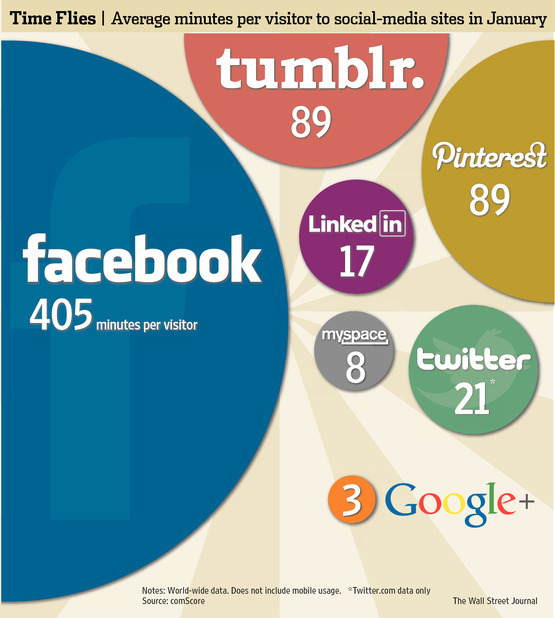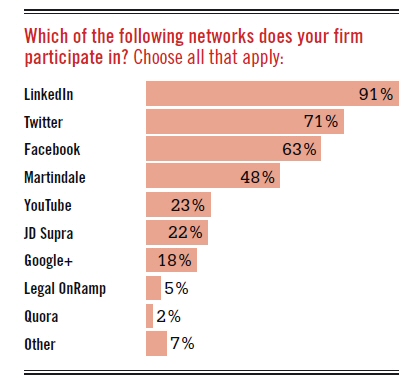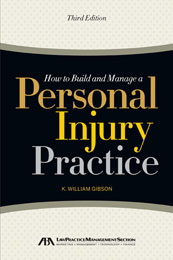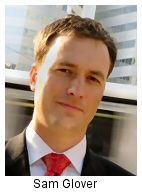.jpg) Did your website generate the volume of leads this year that you expected? What do you plan to do differently to maximize your investment in web marketing and drive more business? Here's a list of 10 things to do with your website, courtesy of my colleague Craig McGuire, Product Marketing Manager, Websites/SEO/SEM at LexisNexis in New Providence, NJ.
Did your website generate the volume of leads this year that you expected? What do you plan to do differently to maximize your investment in web marketing and drive more business? Here's a list of 10 things to do with your website, courtesy of my colleague Craig McGuire, Product Marketing Manager, Websites/SEO/SEM at LexisNexis in New Providence, NJ.
Set business goals for 2012. Planning to expand into a new geography or area of practice? Targeting a new type of customer? Want to be considered a thought leader in a particular area of law? Setting specific goals will help you align your website to achieve those objectives.
Make your website mobile. Ensure your law firm’s website is easily found, accessed and utilized 24/7 by mobile device users. Transform your traditional website into one that’s optimized for the mobile Web to drive more potential customers to your business.
Ask an expert. Once you identify your business goals, request a consultation and determine a comfortable budget (earmark usually 2 – 5 percent of monthly budget as a minimum spend). If you
simply lack the time, consider outsourcing your Internet marketing campaigns to qualified experts. You practice law and let others grow your business!
Refresh the content on your website. Stale content and broken links will damage visitors’ perceptions of your ability to practice law. Review your website and refresh content and update profiles. A polished, professional website with timely content is a must-have for any law firm, regardless of size.
Incorporate video on your site. Develop an introductory video of the managing partners that showcases personality as well as expertise. Post the video on the Web (including YouTube). Our
studies have shown that a well-produced video can be a primary factor in a consumer’s decision to contact a firm.
Get listed in and link to online directories. Identify all online directories available for posting attorney and firm profiles. This includes attorney-specific portals and social networking sites. Link
to these on your website and don’t forget to add your firm’s website to each online listing you post.
Be more responsive! While your Internet marketing team brings in qualified leads, put a system in place to respond to each one. Make a phone call, send an email in response to an inquiry or schedule a meeting. Keep these leads in a simple database so when you’re ready to send the first newsletter from the firm, clients and prospect lists are easily accessible.
Optimize your website. Search Engine Optimization (SEO) experts can be tremendously helpful in improving online visibility and optimizing a firm’s organic search rankings. Select a search marketing team that specializes in law firms and offers transparent and results-driven metrics.
Make better use of social media. Maximize your website’s visibility and drive more clients to your business by competing in a space that generates half of the Internet’s online conversations. Craft a solid, comprehensive, manageable social media presence that includes a blog page and profiles on major social sites, including Facebook, Twitter and LinkedIn sites. Also consider a social “listening” service to ensure you monitor your reputation in social media circles.
Engage in pay-per-click advertising. No firm is too small to reap tangible benefits from pay-per-click campaigns. Ensure your marketing experts select appropriate keywords, based on analysis, that are geographically and topically suited to your firm. This strategy helps favorably position small firms to directly compete with larger firms in your market.
 The picture tells the story where people spend their time on social media. According to comScore, the sites where the most minutes are spent per month:
The picture tells the story where people spend their time on social media. According to comScore, the sites where the most minutes are spent per month: Thanks to
Thanks to  Businesses that have come to see social media channels as ways to build brand and save on costs associated with research, recruitment and advertising are far more likely to understand its actual value. Amy Jo Martin, writing in the Harvard Business Review blog, suggests thinking of social media as a communication conduit as essential as the telephone: “companies can
Businesses that have come to see social media channels as ways to build brand and save on costs associated with research, recruitment and advertising are far more likely to understand its actual value. Amy Jo Martin, writing in the Harvard Business Review blog, suggests thinking of social media as a communication conduit as essential as the telephone: “companies can  I reported that
I reported that .jpg) Kudos to
Kudos to .jpg)

.jpg) Did your website generate the volume of leads this year that you expected? What do you plan to do differently to maximize your investment in web marketing and drive more business? Here's a list of 10 things to do with your website, courtesy of my colleague
Did your website generate the volume of leads this year that you expected? What do you plan to do differently to maximize your investment in web marketing and drive more business? Here's a list of 10 things to do with your website, courtesy of my colleague .jpg)
.jpg) Twitter users say 39% of the tweets they get are mediocre and another 25% are not worth reading at all, according to a study by researchers at Carnegie Mellon University, MIT and Georgia Tech.
Twitter users say 39% of the tweets they get are mediocre and another 25% are not worth reading at all, according to a study by researchers at Carnegie Mellon University, MIT and Georgia Tech. The era of the Luddite lawyer is over. Solos and GPs in firms of one to five lawyers are embracing social media wholeheartedly, according to new research – even more than our colleagues in large law firms.
The era of the Luddite lawyer is over. Solos and GPs in firms of one to five lawyers are embracing social media wholeheartedly, according to new research – even more than our colleagues in large law firms. There is a treasure trove of marketing advice for lawyers in small firms in the ABA's new book,
There is a treasure trove of marketing advice for lawyers in small firms in the ABA's new book,  Check out my
Check out my  The
The 

 We all know that print is losing readers to online options, and for the first time in U.S. history, marketers are projected to spend more on online advertising than on advertising in print magazines and newspapers.
We all know that print is losing readers to online options, and for the first time in U.S. history, marketers are projected to spend more on online advertising than on advertising in print magazines and newspapers. I spotted this practical
I spotted this practical  Sam Glover, the editor of the
Sam Glover, the editor of the  A quick review of the comments shows that many of his readers disagree with him about Facebook. This is probably fine with him as Glover likes to stir up debate.
A quick review of the comments shows that many of his readers disagree with him about Facebook. This is probably fine with him as Glover likes to stir up debate.


